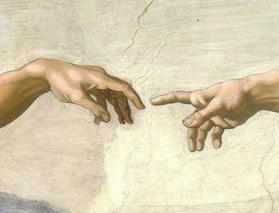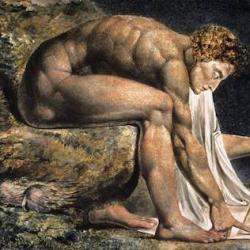A funny thing happened on the way to mapping the genome, says James Le Fanu ( Why Us?: How Science Rediscovered the Mystery of Ourselves ). Humans have 25,000 genes. That’s enough to get the job done, of course, but scientists were surprised to discover so few. To transform an egg into a baby, those genes have to “multi-task.”
That’s just the beginning of sorrows. A fly has 17,000 genes, and so do tiny worms. Why are the numbers so similar when the organisms are so vastly different. And vertebrates: Chimps and even mice have a genome that is “virtually interchangeable” with human the human genome. Good news for Darwinists perhaps; bad news for people who wanted to crack the mystery of living things.
Le Fanu explains the disappointment:
“These findings were not just unexpected, they undermined the central premise of biology: that the near-infinite diversity form and attributes that so definitively distinguish living things one from the other must ‘lie in the genes.’ The genome projects were predicated on the assumption that the ‘genes for’ the delicate, stooping head and pure white petals of the snowdrop would be different from the ‘genes for’ the colourful, upstanding petals of the tulip, which would be different again from the ‘genes for’ flies and frogs, birds and humans. But the genome projects reveal a very different story , where the genes ‘code for’ the nuts and bolds of the cells from which all living things are made . . . but the diverse subtlety of form, shape and colour that distinguishes snowdrops from tulips, flies from frogs and humans is nowhere to be found . Put another way, there is not the slightest hint in the composition of the genes of fly or man to account for why the fly should have six legs, a pair of wings and a brain the size of a full stop, and we should have two arms, two legs and that prodigious brain. The ‘instructions’ must be there, of course, for otherwise flies would not produce flies and humans humans – but we have moved, in the wake of the Genome Project, from assuming that we knew the principle, if not the details, of that greatest of marvels, the genetic basis of the infinite variety of life, to recognizing that we not only don’t understand the principles, we have no conception of what they might be.”
Further research won’t fix the problem. Scientists can map all the genomes they want, but they’ll find that “they are composed of several thousand similar genes that ‘code’ for the nuts and bolts of the cell of which they are made, while the really interesting question of how those genes determine the unique form and attributes of the snail, bat, elephant, whale or whatever, would remain unresolved.”
Le Fanu tells a similar story with brain science. The upshot is that two of the most aggressive and exciting scientific projects of the last half century have revealed that science can’t explain the reality of things, especially of living things. It’s time, he suggests, to give up the modern notion that science gets at a level of reality that is somehow “more real” than our daily experience of the world.











